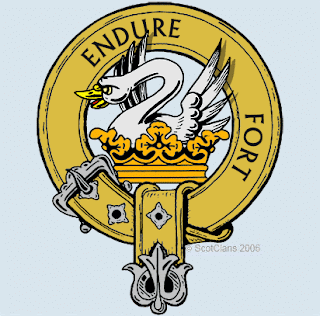Legend has it that Andrew, brother of Simon Peter, refused to be crucified on a
cross
like Jesus, feeling he was not worthy to receive the same treatment as his Lord. So he was crucified upside down on an 'X' cross.
In 370 AD some of Andrew's remains were stolen from
Constantinople
by St. Rule and taken to the "ends of the earth" for safekeeping. He buried them in a
Pictish
settlement on the east coast of Scotland. This settlement became known as
St. Andrews
.
In 832 AD, the
Picts
, under Angus MacFergus, were fighting the
Northumbrians
of England. Legend says an "X" cross appeared in the sky, encouraging the Picts and scaring the Northumbrians away.
On the
Saltire
flag, the field is blue with a white "X" cross. The azure blue symbolizes the sky; the white is St. Andrew's cross. The King, Angus MacFergus, adopted this symbol as a national emblem.
From that time onward, the
Saltire
, or St. Andrew's flag, has been the national flag of the Scots. It was also worn on the
tunics
and
bonnet
s of Scottish soldiers as a way to identify one another on the battlefield.
Today the Saltire is believed to be the oldest national
flag
still in use.














